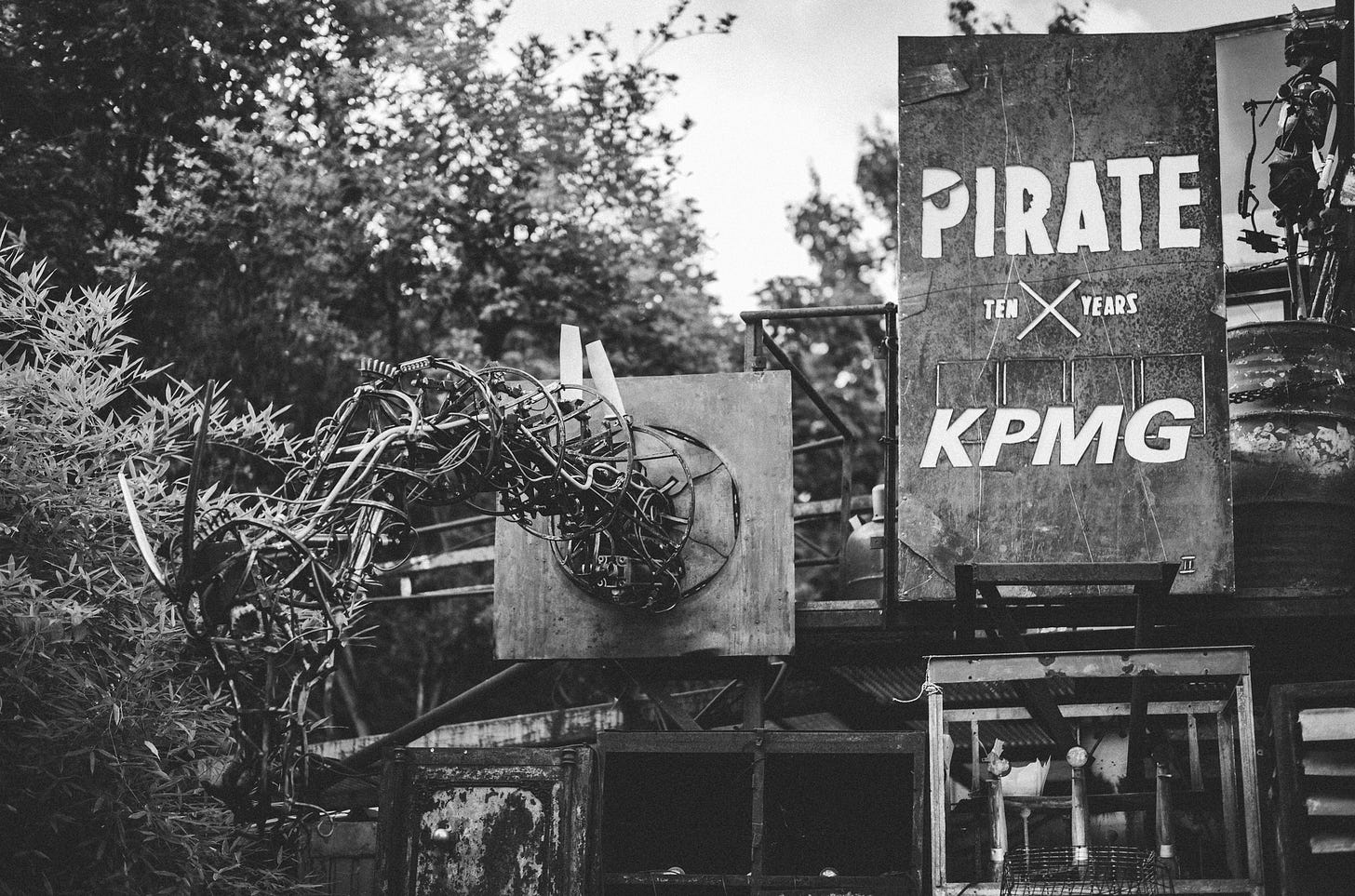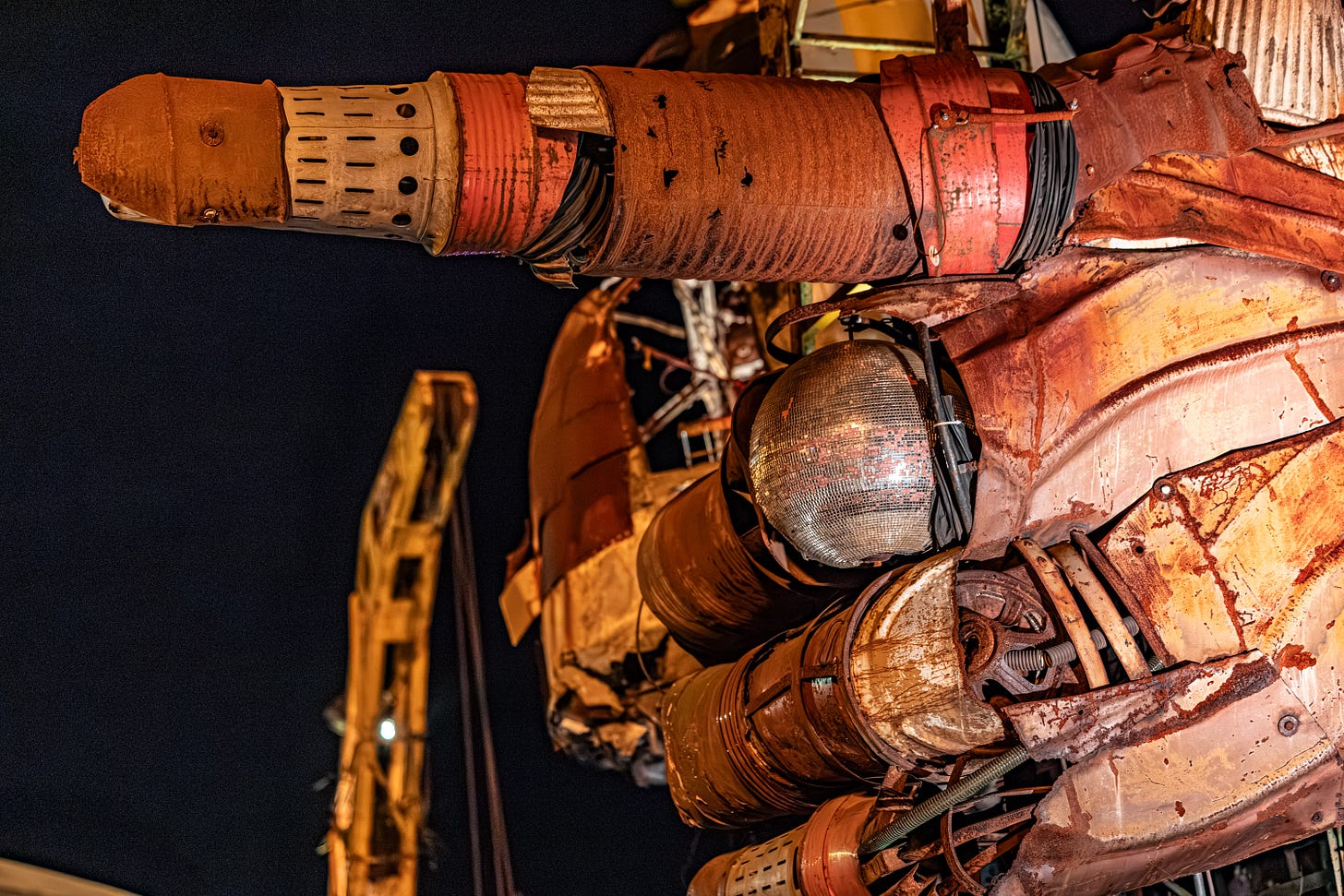The Consulting Paradox
AI consulting is set to grow 8x in the next decade. So why are most consultants about to disappear?
In the last few months, we’ve done a substantial amount of AI consulting at VisualMakers - building agents, helping companies become AI-fluent, managing the messy reality of transformation. It’s made me think hard about where this industry is heading and whether we - as a business - are preparing for the right future.
Here’s what’s strange: the consulting industry is facing its biggest disruption in decades, yet it’s also growing faster than ever.
AI consulting services are projected to jump from $11 billion in 2025 to $91 billion by 2035 - an eight-fold increase in a single decade. Companies are hiring consultants to help them adopt AI. Meanwhile, that same AI is quietly making huge chunks of traditional consulting work obsolete.
It’s like watching someone build the ladder they’ll eventually use to climb out of their own job.
The part that’s actually getting automated
Let’s be specific about what’s changing.
A significant portion of consulting work has always been research and synthesis: gathering information, identifying patterns, creating frameworks, and packaging insights. This is the work that justified billing a junior consultant for 40 hours to produce a slide deck.
AI is very good at this.
You can now feed an AI your company’s organizational structure and get a detailed analysis of communication bottlenecks. Upload your product roadmap and receive prioritization recommendations based on thousands of comparable cases. Ask for the five most common failure modes in Series B SaaS companies and get answers that would’ve required three research calls and a literature review.
What used to cost EUR 15,000 and take two weeks now costs cents and takes minutes. The information-gathering and synthesis work that fills consultant timesheets is increasingly automatable.
But here’s what the doom-and-gloom predictions miss: this was never the most valuable part of consulting anyway.
Companies hired consultants who did this work because they had to - someone needed to gather the information. What they actually wanted was the judgment that came after.
The work that’s getting harder to automate
There’s a moment in most consulting engagements where the real work begins. It’s usually after the analysis is done. The data is clear. The options are laid out. The framework is built.
And then someone has to decide what it actually means for this specific company, with these specific people, in this specific moment.
That’s the hard part.
You can’t train a model to know that the CFO and CTO haven’t spoken in six months, which is why the “obvious” solution will never get implemented. Or that the CEO’s confidence is exactly the problem, not the solution. Or that the data looks clean but came from a team with an incentive to make themselves look good.
This is the work that requires pattern recognition earned through consequences. Knowing when to trust the numbers and when to trust your gut. Understanding that the presenting problem is rarely the actual problem.
A model can tell you the best way to restructure a team. It can’t tell you that the real issue is the team doesn’t need restructuring - it needs a new leader.
What’s actually happening to consulting
The industry isn’t collapsing. It’s splitting.
Research shows that while two-thirds of organizations now employ AI in multiple business functions, many struggle to move from proof-of-concept to production. Between 70-85% of AI projects fail to deliver expected value. Only about 30% make it past the pilot stage into full implementation.
This creates two types of consulting work:
The first type: Implementation and operational consulting. How do we actually use these tools? How do we integrate them into our workflows? How do we measure what matters? This is what we do at VisualMakers - building AI agents, helping teams become AI-fluent, managing the transformation from proof-of-concept to production. It’s technical, specific, and growing explosively because AI adoption is hard.
Major consulting firms are responding accordingly. Apparently, McKinsey now has 12,000 AI agents supporting its workforce and reports that 40% of its projects are AI-related. All the big firms are investing heavily in AI. This isn’t about replacing consultants - it’s about retooling them.
The second type: Strategic judgment. What should we do, given everything we now know? What are we optimizing for? What matters more, what less? This is the work that requires wisdom, not just intelligence. It’s what I’ve focused on for the last two decades - helping leaders think clearly when stakes are high.
The middle is getting squeezed - the consultants who sold packaged expertise and standard frameworks. That knowledge is now widely available. The framework for running a retrospective doesn’t command a day rate anymore.
Strategy without execution is just PowerPoint
Another shift has reached its conclusion. It’s been building for 15 years: the gap between strategy and execution has collapsed.
Traditional consulting was built on a clean handoff. Analyze. Strategize. Create beautiful slide decks. Hand everything over to the client. The planning phase stretched for months. The PowerPoint was the deliverable.
That model is dead.
When AI generates strategic frameworks in minutes, companies don’t need consultants spending weeks on analysis. They need people who move from insight to working prototype in days. People who build the actual thing, test it with real users, and adapt based on what works - not what looks good in a deck.
This is entrepreneurial work. Speed, iteration, building things that solve real problems. Less perfecting the plan, more getting something valuable into people’s hands.
The consultants who thrive can think strategically and ship practically. They know that when everyone has planning tools, execution is the differentiator.
That’s why at VisualMakers, companies don’t hire us for strategy decks. They hire us to build working AI agents and ship prototypes quickly. The value isn’t in the analysis - it’s in getting to something that works, fast.
The real disruption
The deeper change isn’t that AI can do parts of consulting. It’s that AI is changing what clients need from consultants.
Companies used to hire consultants because expertise was scarce. Now they hire consultants because clarity is scarce. They’re drowning in information, frameworks, and analysis. Every employee has access to AI that can generate strategic recommendations on demand.
The new problem is: which recommendations matter? What’s signal versus noise? When is “best practice” actually wrong for us?
This is a better problem for good consultants. And a worse one for mediocre ones.
Think about it: if everyone in your organization can generate a competent strategic analysis, the person who can say “this analysis is technically correct but strategically stupid” becomes more valuable, not less.
The consultants who vanish
The ones at risk aren’t people who lack technical skills. They’re the ones whose value was always informational, not judgmental.
They’re the consultants who:
Resell frameworks that are now freely available
Run the same workshop regardless of context
Provide answers without questioning the question
Mistake process for progress
Defend their methodology instead of solving the problem
These consultants were expensive search engines. And nobody needs an expensive search engine anymore.
Even the big consulting firms see this. Much of the work junior consultants used to do - benchmarking, research synthesis, PowerPoint creation - is increasingly automated.
What got you here won’t get you there.
The consultants who thrive
The ones who survive won’t compete with AI. They’ll collaborate with it.
They’ll use AI to handle research, generate options, and synthesize data - then spend their time on the parts that matter: diagnosing the real problem, understanding the political dynamics, challenging assumptions, and helping leaders think clearly when stakes are high.
This requires a different skill set than traditional consulting. Less about knowing frameworks, more about knowing when frameworks mislead. Less about providing answers, more about elevating the questions.
The future belongs to consultants who can look at AI-generated advice and say: “Yes, that’s the fastest path. But here’s why it’s also the path that destroys trust in your team” or “The data says pivot, but the data doesn’t know your industry is about to shift in 18 months.”
This is judgment. And judgment can’t be automated because it requires understanding consequences, context, and humans in ways that models can’t replicate - at least not yet.
What this means if you’re building something
Here’s the practical takeaway:
You’re about to have access to better operational and tactical advice than ever before. Use it. Let AI handle research, generate frameworks, and produce analyses.
But don’t confuse speed with direction. Don’t outsource judgment to a tool. And don’t assume the best answer is the right answer.
The hardest part of building anything isn’t figuring out how to do it. It’s deciding whether you should, and if so, in which direction.
AI can tell you how. The right consultant helps you figure out whether and why.
That distinction is about to become much more valuable.
The choice ahead
Most consultants built their careers on being the person with the information. That game is over.
The new game is being the person with the judgment to know what to do with the information. And the ability to turn that judgment into something real.
It’s a better game. But it requires admitting that what got you here won’t get you there. Many consultants won’t make that shift. They’ll keep selling what they’re comfortable selling, wondering why clients are paying less for it.
The ones who will thrive are already uncomfortable. They’re questioning their own frameworks. They’re using AI to do the work they used to bill for. They’re getting honest about where their real value lives. They’re learning to ship, not just strategize.
That discomfort is the signal you’re adapting.
The consulting industry isn’t dying. It’s being rebuilt. The question is whether you’re building the future version or defending the past one.
At VisualMakers, we made our choice. We’re not competing with AI - we’re using it to focus on what actually matters: helping you think clearly about the transformation ahead, then building what’s needed so it’s useful today, not someday.
Because in a world where everyone has access to expertise, the people who help you figure out which expertise to trust, and then ship something that actually works, aren’t becoming obsolete.
They’re becoming essential.
🙏
Be kind,
Manuel





